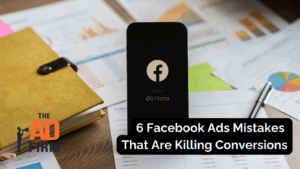In 2025, creating great content isn’t enough; keeping it great is just as important. Even the best-performing blogs, service pages, and articles won’t stay on top forever. Over time, content that once brought in substantial traffic and rankings can slowly lose its effectiveness.
This natural process is called content decay, when older content starts to lose performance because it’s no longer as fresh, relevant, or aligned with what users and search engines expect today.
Content decay is not a sign of failure; it’s a normal challenge that every online business faces. The good news is that spotting and revitalizing your best content can unlock some of the fastest, most cost-effective growth opportunities for your website.
In this guide, we’ll walk you through exactly what content decay is, why it happens, how to identify decaying content, and how to bring it back to life, stronger than ever.
What Content Decay Is and Why It Happens
Content decay happens when a page or post that once performed well, ranking high in search engines, attracting visitors, and driving engagement, starts to lose ground over time. This can mean drops in website traffic, lower rankings for important keywords, fewer clicks, or less time spent by visitors on the page.
There are several reasons why this natural decline occurs:
- Search engine algorithms change: Google and other search engines are constantly updating how they evaluate and rank content. What worked a few years ago might not meet today’s standards for relevance, quality, or user experience.
- User behavior and expectations shift: Audiences change how they search, what they expect from a website, and the types of content they find valuable. If your content doesn’t evolve with these shifts, it can quickly feel outdated or less useful.
- Competitors publish fresher, more relevant content: In fast-moving industries, new blogs, guides, or resources are published all the time. If a competitor creates something more recent or more detailed, it can push your older pages down in the rankings.
- Facts, links, or examples become outdated: References to old statistics, broken links, or examples that no longer apply can erode the credibility and usefulness of a page, making visitors and search engines trust it less.
Ignoring content decay doesn’t just mean missing out on traffic. Over time, it can harm your SEO authority, weaken your brand’s reputation, and allow competitors to catch up. Keeping your content fresh is key to maintaining your online presence and sustaining your growth momentum.
Elevate Your Market Presence with The Ad Firm
- SEO: Boost your search engine visibility and supercharge your sales figures with strategic SEO.
- PPC: Target and capture your ideal customers through highly optimized PPC campaigns.
- Social Media: Engage effectively with your audience and build brand loyalty through targeted social media strategies.
How to Spot Content That Needs a Refresh
Before you can fix content decay, you need to know where it’s happening. Decaying content often shows clear signs, you just have to know what to look for.
Here are the main signs your content may be losing value:
- Traffic drops over time: If a blog post or page used to bring in steady visitors but now shows a steady decline, it could be a sign of content decay. You can check for traffic trends in tools like Google Analytics or Google Search Console, focusing on performance over the past 6 to 12 months.
- Rankings slipping compared to newer competitors: Even if your content was once at the top of search results, it may have dropped as other businesses publish fresher or more optimized pieces. Tracking your rankings through SEO platforms like Ahrefs, SEMrush, or Search Console can reveal when your positions start to fall.
- Lower engagement from visitors: If people are spending less time on your page or bouncing away quickly, it could signal that the content no longer meets their needs. You can track time-on-page and bounce rates using Google Analytics or similar tools to identify pages where engagement is dropping.
Best Practices for Revitalizing Old Content in 2025
Once you’ve identified which pieces of content are starting to decay, the next step is to give them new life. Refreshing old content not only protects your SEO rankings but also strengthens your authority with updated, useful information.
Here’s how to approach it in a smart, sustainable way.
1. Update Information and Add New Insights
Older content often falls behind because the information it provides is no longer current. Refreshing outdated facts, links, and examples makes your content immediately more trustworthy to both users and search engines.
How to do it:
- Review the entire piece and replace any outdated statistics, broken references, or facts with current sources: Updated information ensures that your audience receives the most accurate insights, which builds trust and encourages return visits. Even minor updates, like replacing a 2021 report with a 2025 one, can make a major difference to your content’s credibility.
- Add new sections where it makes sense, such as updated industry trends, new product developments, or fresh case studies: This shows users (and Google) that your page is actively maintained and evolving alongside the topic. New additions can also help your content cover broader search intents and rank for new, related keywords.
- Include your own new insights based on recent experiences to make the content feel original, not just updated: Sharing lessons learned or fresh perspectives gives your content a personal and authentic edge. Readers are much more likely to trust advice backed by real-world experience.
2. Improve On-Page SEO Basics
Even strong articles can start to slip if their SEO basics become outdated. Search engine expectations and user behavior shift over time, so refreshing your SEO elements is key.
Advance Your Digital Reach with The Ad Firm
- Local SEO: Dominate your local market and attract more customers with targeted local SEO strategies.
- PPC: Use precise PPC management to draw high-quality traffic and boost your leads effectively.
- Content Marketing: Create and distribute valuable, relevant content that captivates your audience and builds authority.
How to do it:
- Rewrite or fine-tune your title tags and meta descriptions to better reflect today’s search trends and keywords: A strong title and description help your page stand out in search results and improve your click-through rate. Make sure they match the updated content, not just the original theme.
- Update headers (H1, H2s, H3s) to clearly match what users are looking for now, not what they were searching for two years ago: Clear, relevant headings not only help users scan the page easily but also tell search engines exactly what your page is about. Keeping headings fresh ensures that your structure remains relevant to current search intent.
- Add new internal links to relevant fresh content you’ve published recently, and repair or replace any broken outbound links: Internal links help visitors discover related articles on your site, boosting time on site and SEO. Fixing broken links also improves user experience and prevents search engines from flagging your page as outdated.
3. Upgrade the User Experience
No matter how good your information is, users will leave if the page is hard to read, slow to load, or difficult to navigate. Improving the experience keeps readers engaged and signals quality to search engines.
How to do it:
- Break up long blocks of text into shorter paragraphs, bullet points, or easy-to-scan sections: Most users skim content, especially on mobile devices, so making information visually digestible helps them stay longer. Using clear formatting also reduces bounce rates and improves overall page performance.
- Check and improve your page loading speed, especially on mobile devices, as slow pages can lose visitors quickly: A fast-loading page improves user satisfaction and is a known ranking factor for Google. Tools like PageSpeed Insights can help you identify areas where you can reduce load times.
- Add supportive visuals, such as updated charts, infographics, or videos, to make the information more engaging and help users digest complex points more easily: With the rise of visual search, visual elements can simplify detailed explanations and make your content more memorable. Just make sure all visuals are optimized for fast loading and accessibility.
Stay Ahead With a Smart Content Update Strategy
Refreshing your old content isn’t just about fixing what’s broken; it’s about unlocking new opportunities for traffic, leads, and growth. At The Ad Firm, we help businesses create smart, sustainable content strategies that keep their websites visible, valuable, and ahead of the competition.
Transform Your Online Strategy with The Ad Firm
- SEO: Achieve top search rankings and outpace your competitors with our expert SEO techniques.
- Paid Ads: Leverage cutting-edge ad strategies to maximize return on investment and increase conversions.
- Digital PR: Manage your brand’s reputation and enhance public perception with our tailored digital PR services.
Whether you need SEO support or a full website refresh, our team is ready to help you make the most of what you’ve already built. Giving your best content new life can be one of the easiest ways to stay ahead in today’s fast-moving digital world.
Ready to revitalize your content and strengthen your online presence? Contact The Ad Firm today to get started.






